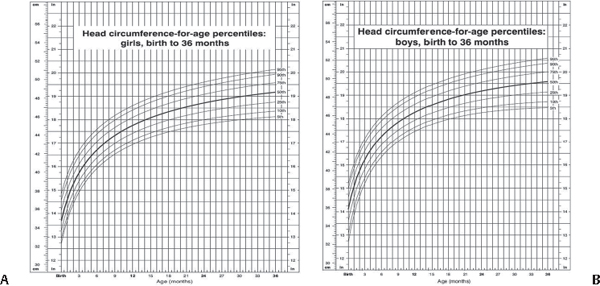70 Screening tests, such as the Denver Developmental Standard Test (DDST), are used for what purpose?1 Recognition of developmental delay by assessing: • Fine motor function • Gross motor function • Social-personal interactions • Language function Give an example of each of these functions that you would expect of a normally developing 2-month-old child. • Follow to midline (fine motor) • Head up to 45 degrees (gross motor) • Smile spontaneously (social) • Vocalizes coos (language) An infant can fist his hands, lift his head in prone position, and stare at faces. His face also responds to sounds. What is his developmental age? One month Can a 4-month-old child grasp a rattle? Yes. She should also regard a hand, laugh and squeal, and roll to supine. If a child can reach for toys, pass a cube, look for you, babble, and pull to sit up, about how old would you expect her to be? 6 months old At what age does the thumb-finger grasp typically develop? Around 9 months. Self-feeding, waving bye-bye, and saying “dada” are also typical at this age. What activities would you expect of a 12-month-old child? • Point to indicate what she wants • Help to turn the pages of a book • Say two to four words • Stand up independently 18 months A 15-month-old child plays pat-a-cake but does not play ball, scribbles but does not build a tower of four cubes, knows three words, and walks backward. In what area is he delayed? Personal-social development (he should play ball at this age) Which skill is typically achieved first: copying a circle or speaking in such a way that strangers can understand all of what is said? Although both skills develop between ages 3 and 4, speech typically becomes understandable before a circle can be copied. What about heel-to-toe walk versus preparing cereal? Preparing cereal is typically achieved around age 4, whereas heel-to-toe walking is more of a 5-year-old skill. Fig. 70.1 (A,B) Head circumference curves. (From the National Center for Health Statistics in collaboration with the National Center for Chronic Disease Prevention and Health Promotion, 2000. Source: Centers for Disease Control and Prevention, Atlanta, GA, Reproduced with permission) What sutures are palpable as “ridges” in an infant?2 • Metopic (runs down the forehead separating the frontal bone in half) • Coronal (separates parietal and frontal bones bilaterally) • Sagittal (separates left and right parietal bones) • Lambdoidal (separates parietal and occipital bones bilaterally) What fontanelles are present in an infant?2 • Anterior fontanelle (junction of metopic, coronal, and sagittal sutures) • Posterior fontanelle (junction of sagittal and lambdoidal sutures) An enlarged posterior fontanelle can occur in what conditions?1 Congenital hypothyroidism, trisomy syndromes, in utero malformation, hypophosphatemia, rickets, osteogenesis imperfecta, hydrocephalus Bulging, tense fontanelles indicate what conditions?2 Increased intracranial pressure (ICP) due to CNS infections, neoplastic diseases, or hydrocephalus A depressed anterior fontanelle can be a sign of what condition?2 Dehydration The CNS matures in what direction? From head to toe (e.g., head control → sitting up → standing up) What is the first component of the pediatric neurological assessment? Full history • Progression of the present condition • Characteristics of the condition
General Considerations
70.1 Normal Milestones

70.2 Fontanelles and Sutures
 4 to 6 cm in diameter at birth
4 to 6 cm in diameter at birth
 Normally closes 4 to 26 months of age
Normally closes 4 to 26 months of age
 1 to 2 cm in diameter at birth
1 to 2 cm in diameter at birth
 Normally closes before 2 months of age
Normally closes before 2 months of age
70.3 Examination of the Pediatric Population
 Static: condition is present during first few months of life (points to perinatal origin)
Static: condition is present during first few months of life (points to perinatal origin)
 Progressive: degenerative CNS disease
Progressive: degenerative CNS disease
 Intermittent: paroxysmal disorders (i.e., seizures)
Intermittent: paroxysmal disorders (i.e., seizures)
Stay updated, free articles. Join our Telegram channel

Full access? Get Clinical Tree






